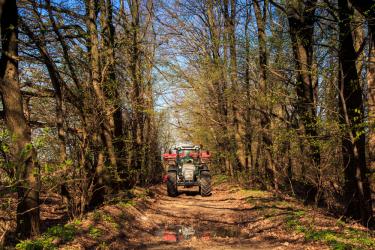What Are Forest Best Management Practices?
Best Management Practices are simple, cost-effective ways to protect water quality, soil and wildlife habitat during forest management activities. Best management guidelines help you plan woodland activities and outcomes based upon a healthy forest model.
A healthy forest manages water with great efficiency. Tree leaves, plant roots and soil all serve to hold a large amount of rainfall and snowmelt within the forest, where it is available to plants and animals. This natural forest function minimizes runoff of water and soil into water bodies, keeping them clean and healthy.
Best Management Practices, or BMPs, work in a similar way. These guidelines help you safeguard water quality and ecosystem health by avoiding unnatural disruptions in the water cycle – like soil compaction, water diversion and streambed erosion. Sometimes disrupting water dynamics during management activities is unavoidable, in which case BMPs can help you minimize the disturbance by following the hydrologic features of a natural forest system–slowing the surface flow of water, increasing absorption and recapturing any disturbed soil that may flow into waterways and wetlands.
There are various approaches to emulating a naturally functioning forest, but in general, you will want to prioritize three key elements:
- Minimizing the risk of sediment flowing into water bodies
- Maintaining the natural flow of water in streams and wetlands
- Protecting and enhancing streamside and wetland vegetation.
Integrating water and soil best practices in your woodland management can prevent soil erosion and compaction, and sedimentation of waterways, which is essential to maintaining healthy forests and waterways within your woodland and in the larger landscape.
How can I get more tips?
It’s simple! Enter your email below.

